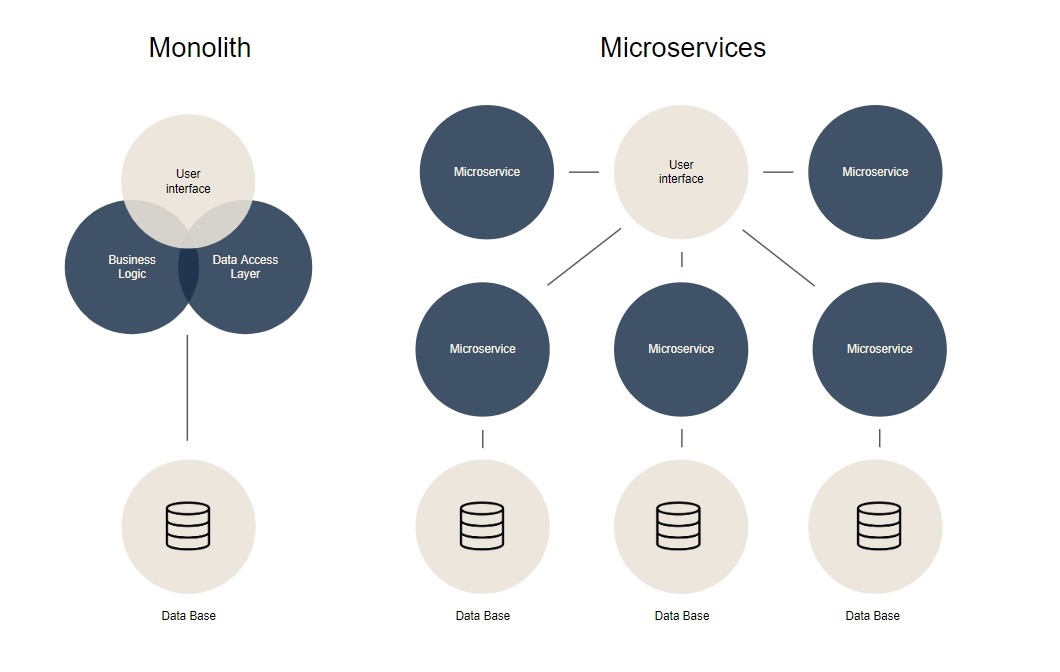
Microservices: the open secret for scaling your ecommerce platform
Ecommerce business owners are no strangers to the challenges of growing their platforms. With an increase in customers, products, and transactions, traditional monolithic can quickly become overwhelmed, causing systems to become sluggish, decrease in performance and create a poor user experience.
Back in 2020, Gartner predicted that by 2023 more than 80% of midsize and large ecommerce sites will have deployed microservices architecture to create a more agile and responsive experience. With big companies such as Amazon and Netflix having made the switch, microservices have proven to be the game-changing technology every ecommerce owner needs to scale and maintain their online business.
What is a microservice architecture?
A microservice, or a composable architecture, is a small, independent application that focuses on a specific task or function. Contrary to a monolith application composed of one extensive database operating with one code, a microservice architecture comprises multiple services communicating through APIs. Each service can be developed, deployed and scaled independently without disrupting any other part of the architecture, leading to a better and more robust platform capable of handling multiple requests simultaneously.

Benefits of building microservices for ecommerce platforms
So, what are the benefits of upgrading your ecommerce platform to a microservice architecture?
- Scalability: Scale to handle more traffic and transactions without affecting the entire application’s performance.
- Agility: Update individual services to respond to changing market trends or user needs quickly and efficiently without disrupting your entire platform.
- Fault tolerance: Quickly identify and fix issues without worrying about crashing your system. Any failure affecting one service won’t bring down other parts of it.
- Better customer experience: Deliver a better customer experience by focusing on the most important features for your users. Build a more personalized experience to drive brand loyalty.
- Flexibility: Build a best-of-breed platform using your preferred technologies, allowing you to innovate and create a platform adapted to your needs.
- Cost-efficiency: Save money by reducing development and hardware costs and focusing only on your needs.
Best practices for moving an ecommerce platform from a monolith architecture to microservices
Moving from a monolith to a microservice architecture requires careful planning and execution. Here are some best practices to implement to ensure a seamless transition.
1. Establish Goals
Before starting the migration process, define your goals and objectives. Consider how this migration will affect your organization and everyone involved. This will help you stay focused and ensure everyone on your team works towards the same outcomes.
2. Measure everything
Collect data on your existing monolith to identify inefficiency or bottlenecks and see where and how to improve processes. Use this information to power your microservices strategy and measure your migration’s impact over time.
3. Make a plan and define service boundaries
Create a plan for migrating each service and define clear boundaries. This will help you avoid overlaps and ensure each service is responsible for a specific task or function. Without defined boundaries, services risk overloading with multiple functions, making them ineffectively challenging to maintain and update.
4. Assemble a cross-functional team
Bring together a team of skilled experts from different departments to plan, design and implement a microservice architecture. This can include developers, DevOps, QA, project managers, and other stakeholders to ensure a smooth and successful migration.
5. Stop updating your monolith
Once you’ve started phasing out your monolith, avoid adding new features or functionalities and instead focus on developing new microservices. This will help you avoid working with a bloated architecture and complicating the migration process.
6. Use event-driven architecture
Microservices architecture is built on event-driven design, which uses events or actions to trigger communication between decoupled services. This approach can help you create a more responsive and flexible platform that can adapt to changes in user behaviour or business needs.
7. Monitor and manage microservices
As you deploy and scale your microservices, monitoring and managing them is crucial as it ensures each service performs as expected. This may involve monitoring tools and creating processes for managing system failures or downtime.
Leaving the monolith behind offers a range of benefits for ecommerce businesses looking to grow and scale their platform while delivering a superior customer experience. If you’re considering migrating to microservices, working with a team of professionals can help ensure a seamless and successful outcome.
Contact us to discuss how we can help you unlock the full potential of microservices for your ecommerce platform.





